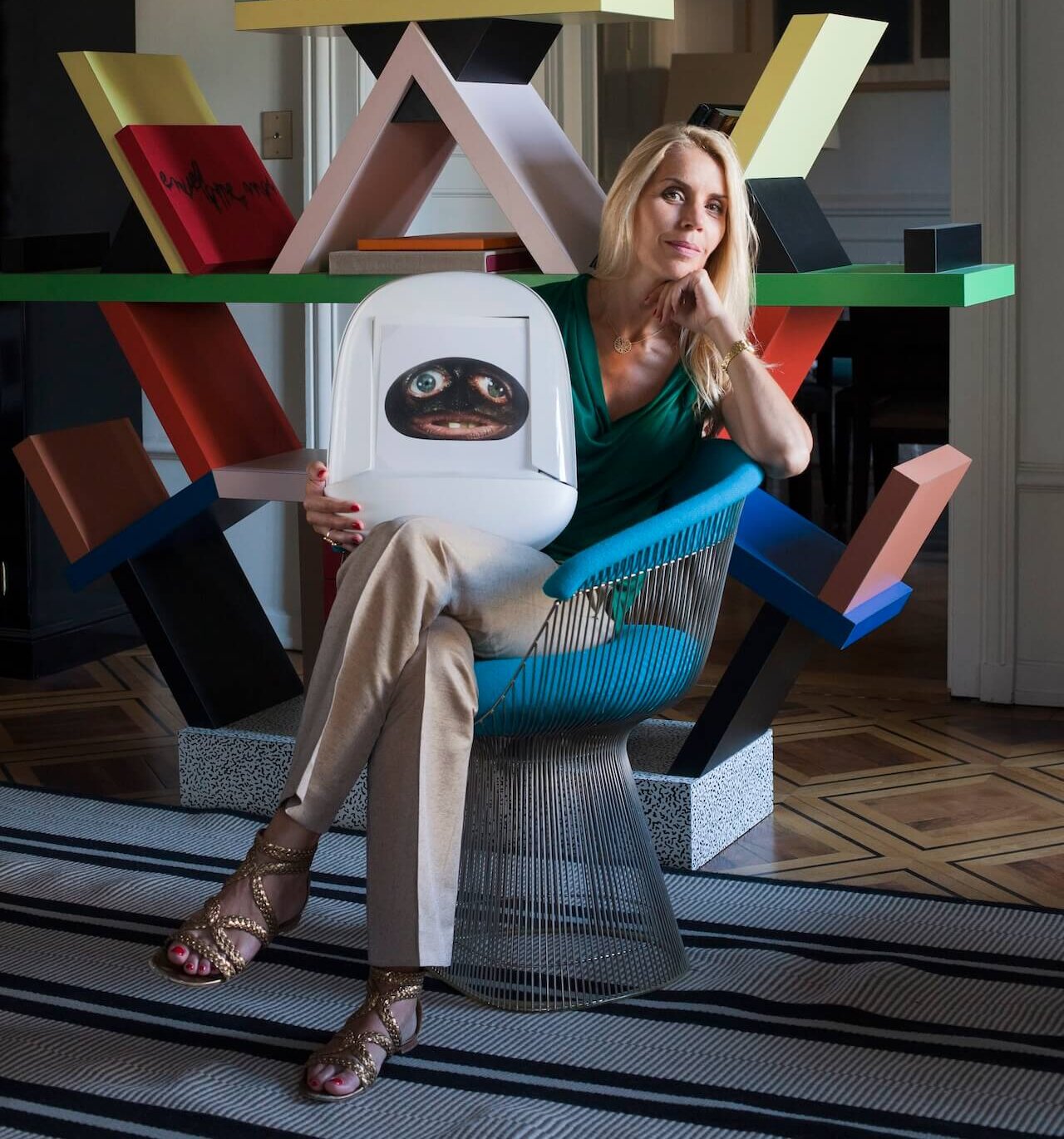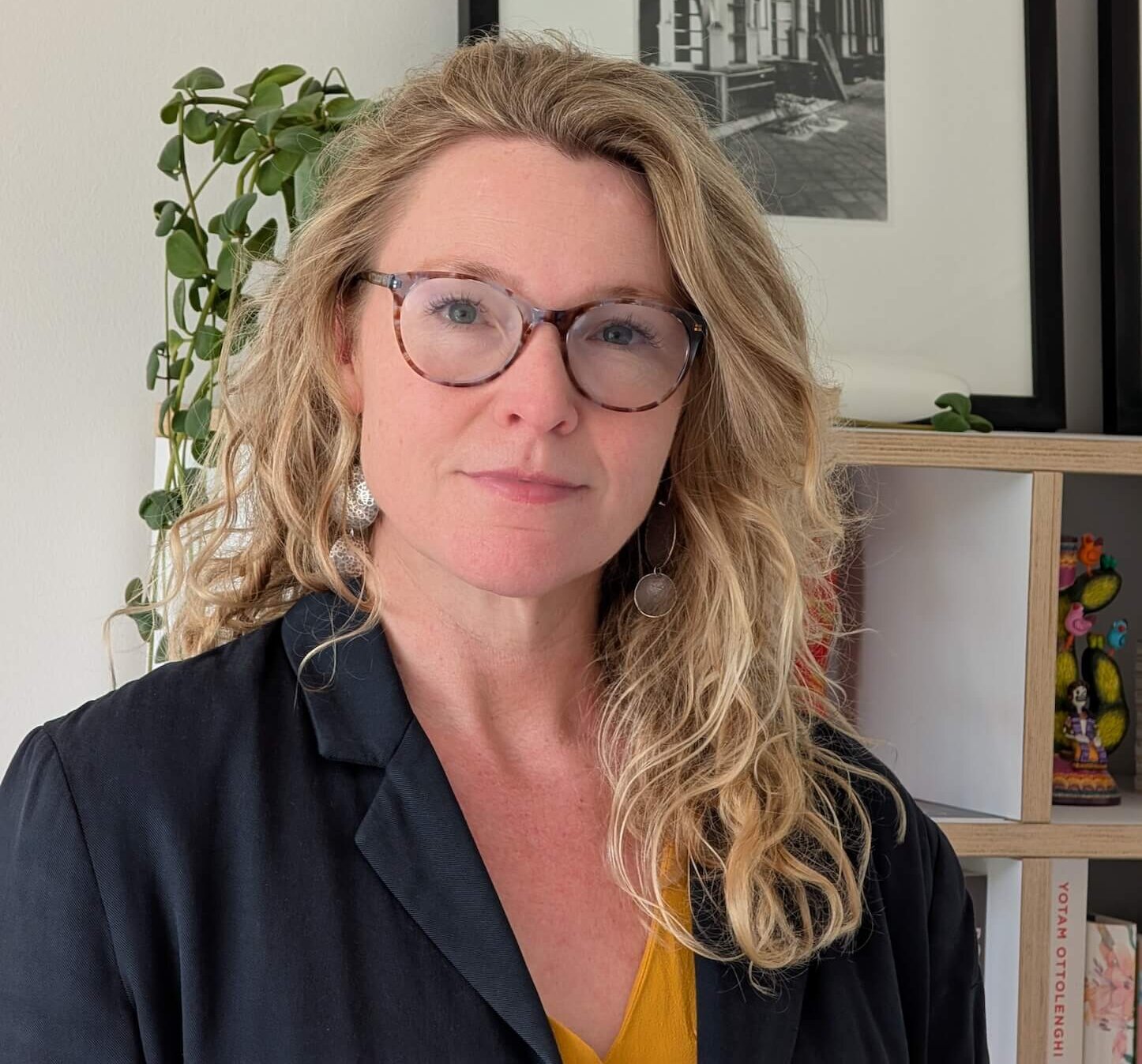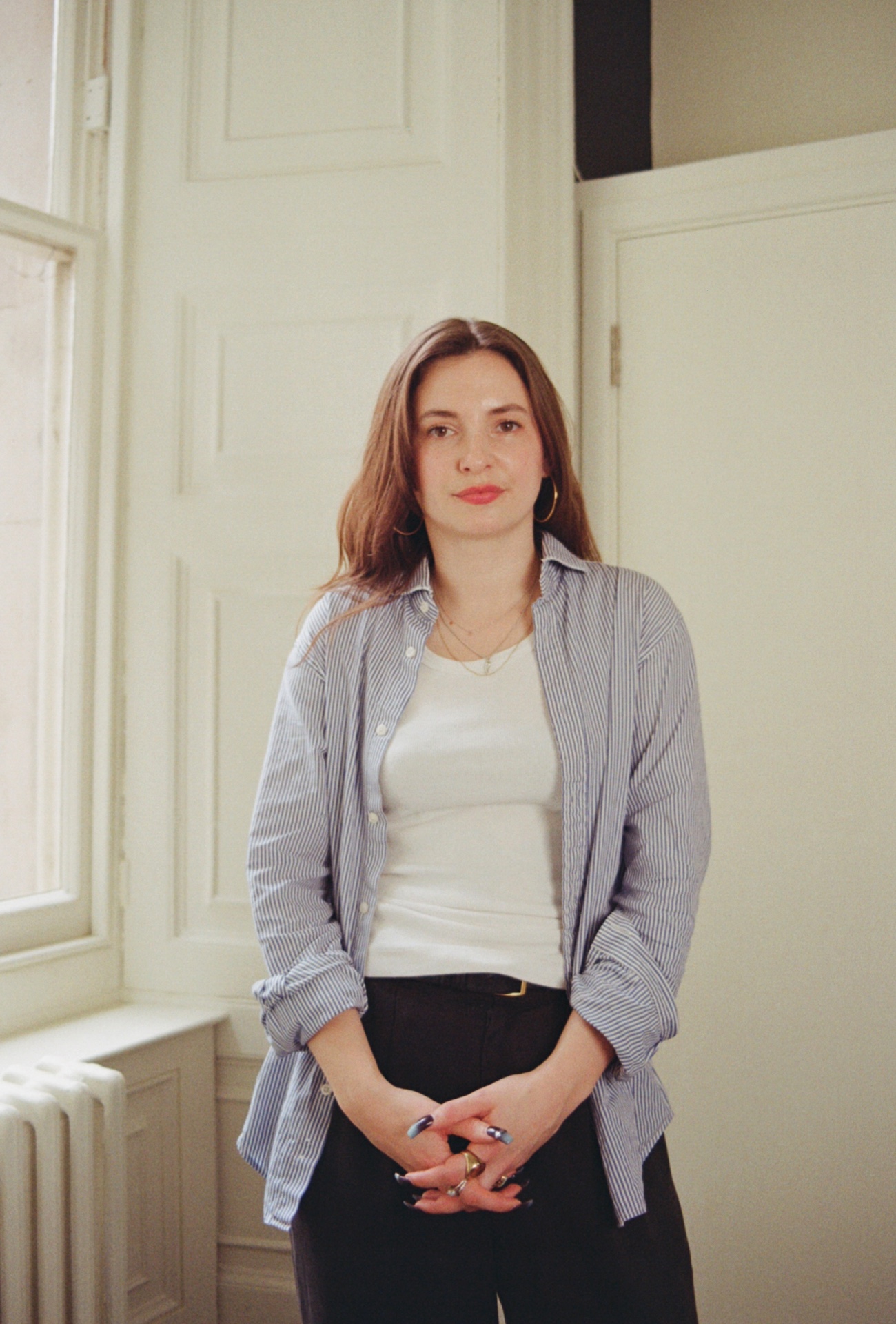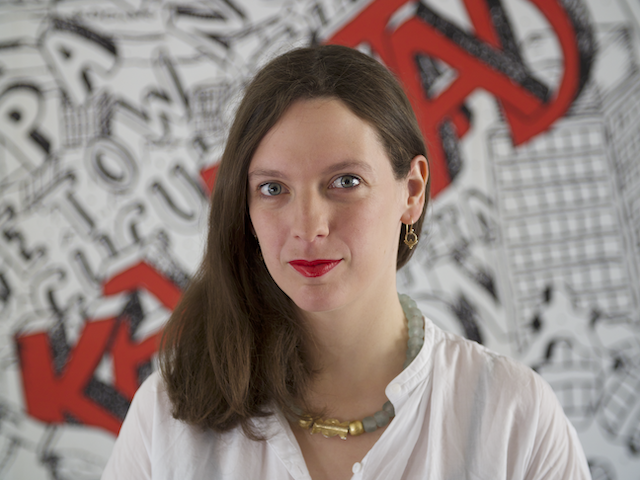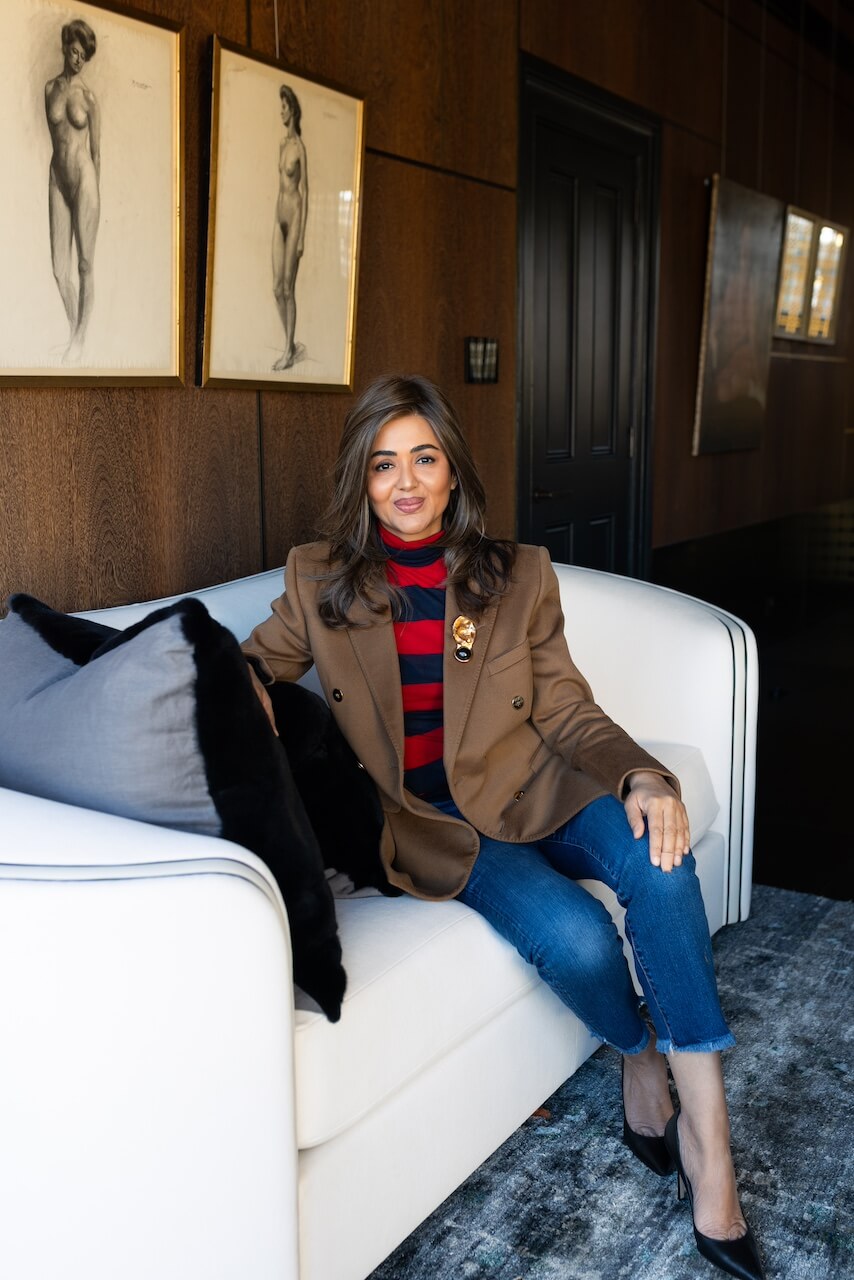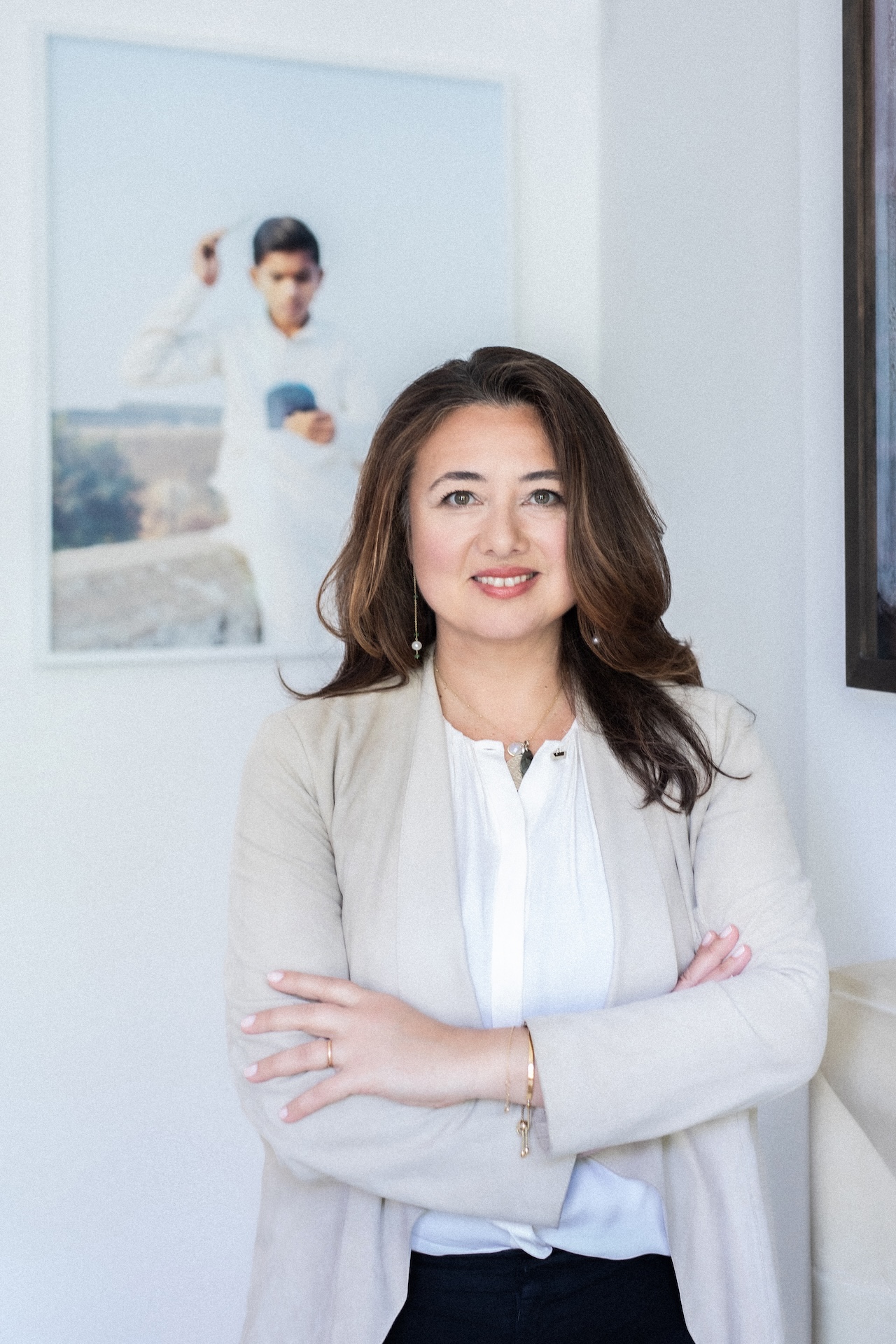


Interview: V&A East Curator, Dr Madeleine Haddon
THE WICK: Tell us about your typical Monday?
Madeleine Haddon :
I get up at 6am, with my mind usually racing and focused on the week ahead, so I begin my Mondays with a meditation. Starting the day with mindfulness and gratitude is an important ritual for me.
After that, I attend a 7am boxing class. I love working out especially first thing in the morning as a way to transition from mental restlessness into physical clarity and strength. By 8:15am, with a matcha in hand, I begin addressing emails. At 9:30am, I meet with my team for our weekly check-in, where everyone outlines their priorities and projects for the coming days.
I set aside Fridays as protected time for activities that spark creativity – whether that’s writing, research, studio visits, or visiting other museums. That space to reflect and recharge is critical. Mondays are when I put that thinking into practice. I typically work from home to focus on strategic planning, reviewing outstanding tasks, and establishing a clear path for the week.
In the early evenings, I often have calls with the US but the rest of the night is reserved for rest. I try to decline events on Mondays and spend time with my husband and our two cats. My husband cooks dinner (I’m really lucky he’s not only a brilliant lawyer but also an incredible chef) and we unwind with our favourite series of the moment. That quiet, restorative time on Monday evening is essential. It gives me a foundation before a typically full week of professional and social events.
TW: You are a senior curator of the highly anticipated V&A East. What is the vision for V&A East and what can we expect from the space in engaging visitors in new ways?
MH:
V&A East is dedicated to creativity and its power to bring change. By working directly with the voices shaping global contemporary culture, we aim to reimagine the V&A’s collection and archive- celebrating art and design in all its forms and opening up new possibilities for everyone.
Our mission is to platform diverse, global narratives that address the urgent issues of our time and to champion radical visionaries of the past and present. We believe museums can inspire the next generation of artists and thinkers, showing how creativity can offer solutions, shape futures, and foster connection in a fractured world.
Young people are at the heart of our vision. We are committed to providing greater access to the V&A’s transhistoric, cross-cultural collections – particularly for those based in East London, a long-standing centre of artistic innovation. Many of these future changemakers lack easy access to London’s museums and may not feel represented and welcome within their walls. It is our mission to create two new sites in London that change this.
Art and design remain vital tools for navigating a complex world. At V&A East, we will nurture and learn from the next generation, offering a platform for underrepresented voices and practices that challenge the traditional canon and reflect the dynamism of global creativity.
TW: V&A East Storehouse is the first building of V&A East to be unveiled later this week and will house over 250,000 objects and 1,000 archives from the V&A’s collection. Are there particular artworks or objects that you are most excited to show to the public?
MH:
There are so many extraordinary objects from the V&A’s collection that I love and am thrilled will now be accessible to the public at Storehouse. Among them are the reconstructed Torrijos ceiling and Agra Colonnade, Robin Hood Gardens fragment, Hew Locke’s The Prize, Xanthe Somers’s Fruit of Our Forefathers, June Crisfield Chapman’s Portrait of Sir Willard White, and Frank Bowling’s Mother Approaching Sixty. The range of works on view reflects the transhistorical and cross-cultural richness of the V&A’s holdings.
What excites me most is how Storehouse invites visitors not only to encounter these objects, but also to deeply engage with the stories behind them—their acquisition histories, their hidden or overlooked meanings, and the ways they continue to inspire creativity today. The architecture of Storehouse itself plays a role in this narrative, designed to peel back the layers of a working museum and share more transparently with our visitors how the V&A, and museums more broadly, operate.
Through initiatives like Order an Object, we are opening up the V&A’s collections to the widest and most diverse audiences possible, empowering visitors to explore the museum on their own terms. I’m especially excited for what we will learn about our own collections through this openness – by placing them in dialogue with the people and communities to whom they ultimately belong.
TW: The David Bowie Centre, will house David Bowie’s archive within V&A East Storehouse. As lead curator on this project, what’s been the most surprising discovery you have found within the archive?
MH:
We will be announcing more about the David Bowie Centre at V&A East in the coming weeks, so I must wait a little longer before sharing some of our most exciting discoveries. Like all work we do at V&A East, we started our curatorial approach with audience consultation. One insight unexpected to many emerged: many young people today are unfamiliar with David Bowie and his legacy.
This finding has significantly informed our curatorial approach. However, our research also revealed that, once introduced to Bowie’s work, younger audiences are deeply inspired by his creativity, innovation, and resistance to categorisation. Bowie embodied a truly multidisciplinary practice – musician, actor, writer, performer, and cultural icon – reflecting the way many young creatives today move fluidly across disciplines and reject singular definitions of identity or artistry.
His influence on contemporary culture is profound. Many of the artists and designers admired by younger generations today regard Bowie as a formative influence. His fearless engagement with self-expression identity, and performance resonates strongly with the values of authenticity, experimentation, and freedom that define the cultural landscape today.
I love archival research for many reasons, but paramount among them is the way even a single individual’s archive can serve as a nexus for the interconnected stories of so many others. Bowie’s archive provides not only a rich and layered view of his personal and creative journey, but also shines a light on lesser-known collaborators and overlooked influences. It offers an extraordinary lens through which to examine broader questions of creativity, cultural change, and the social and historical moments during which Bowie lived and worked.
“We believe museums can inspire the next generation of artists and thinkers, showing how creativity can offer solutions, shape futures, and foster connection in a fractured world.”
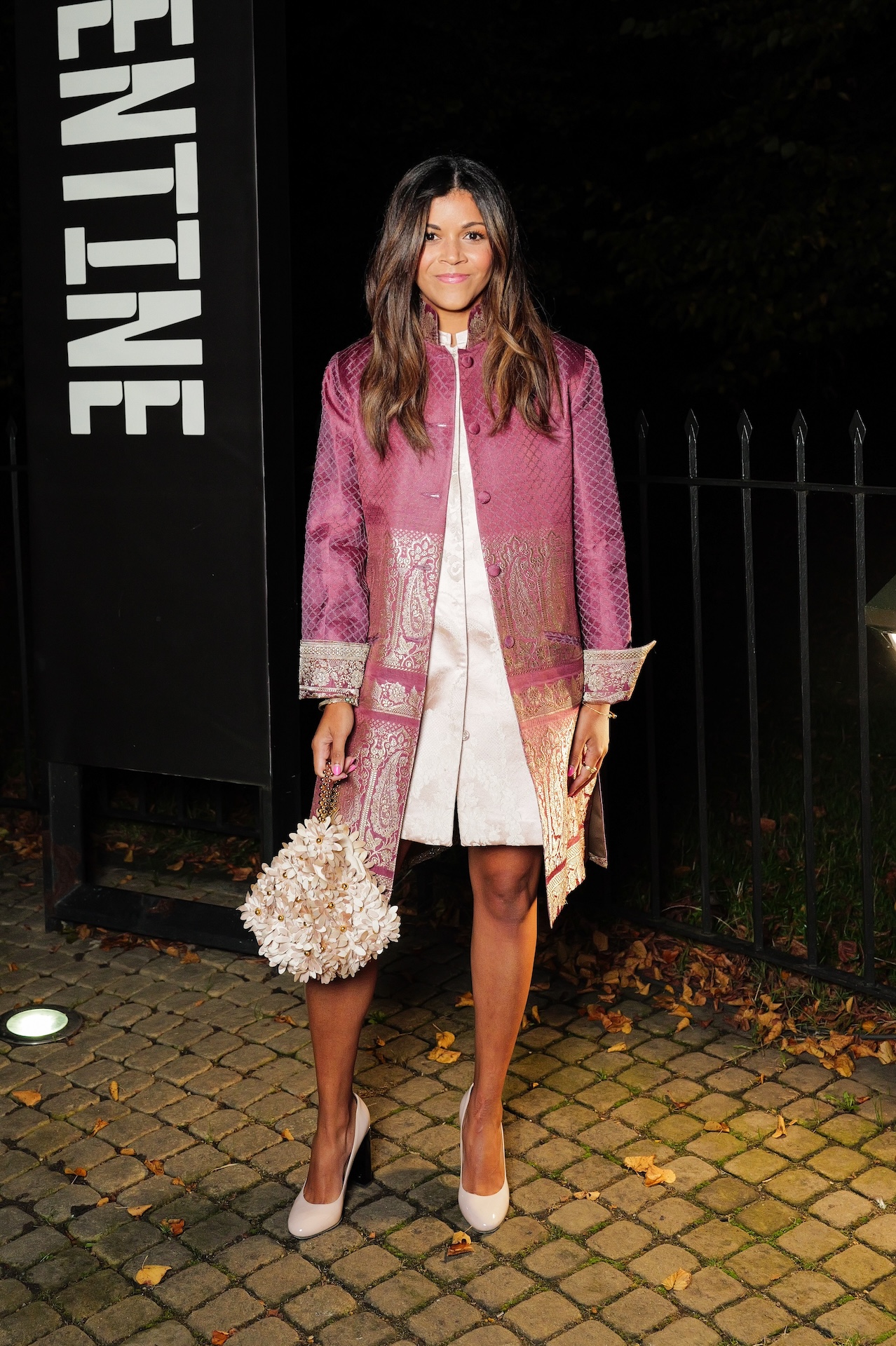
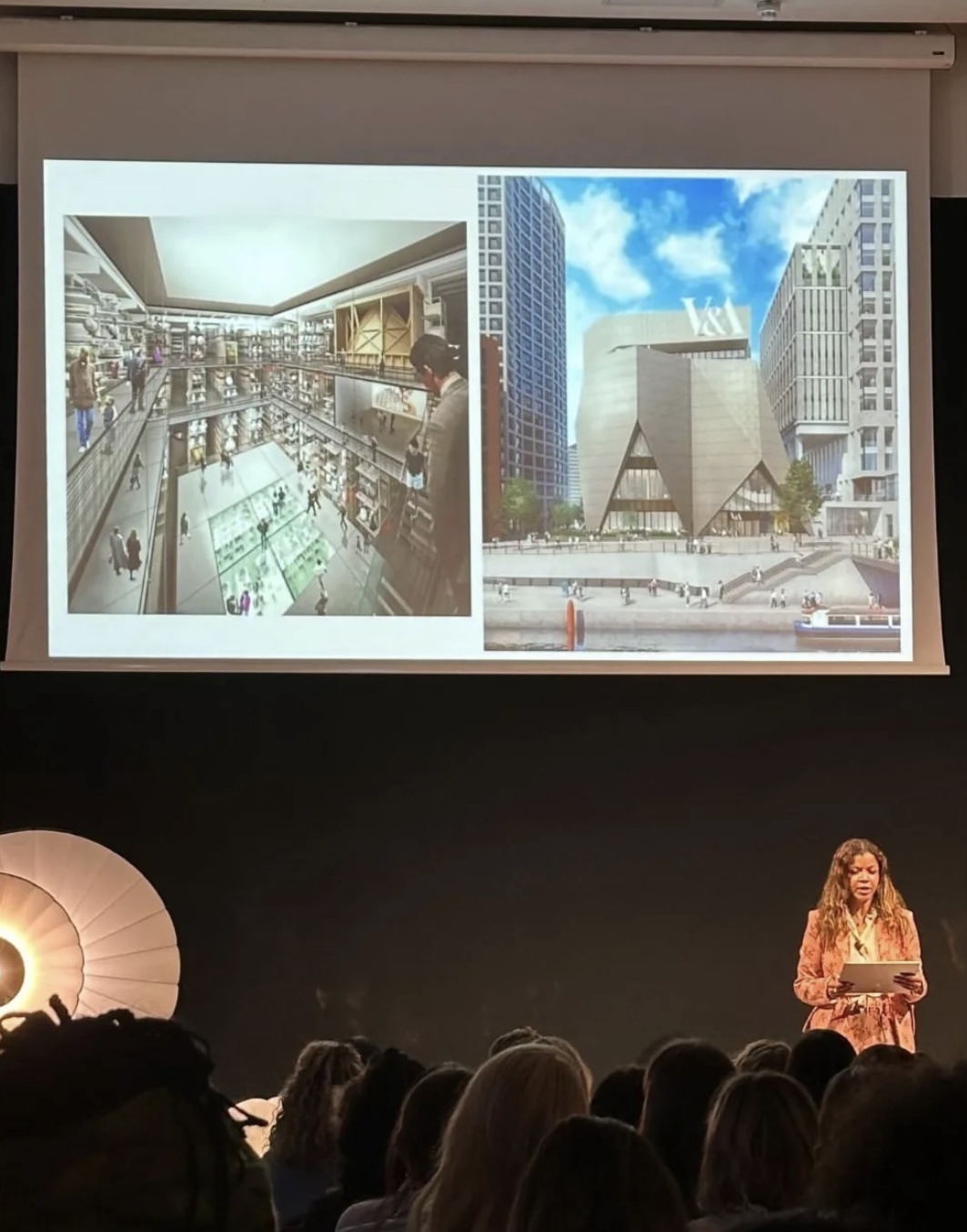
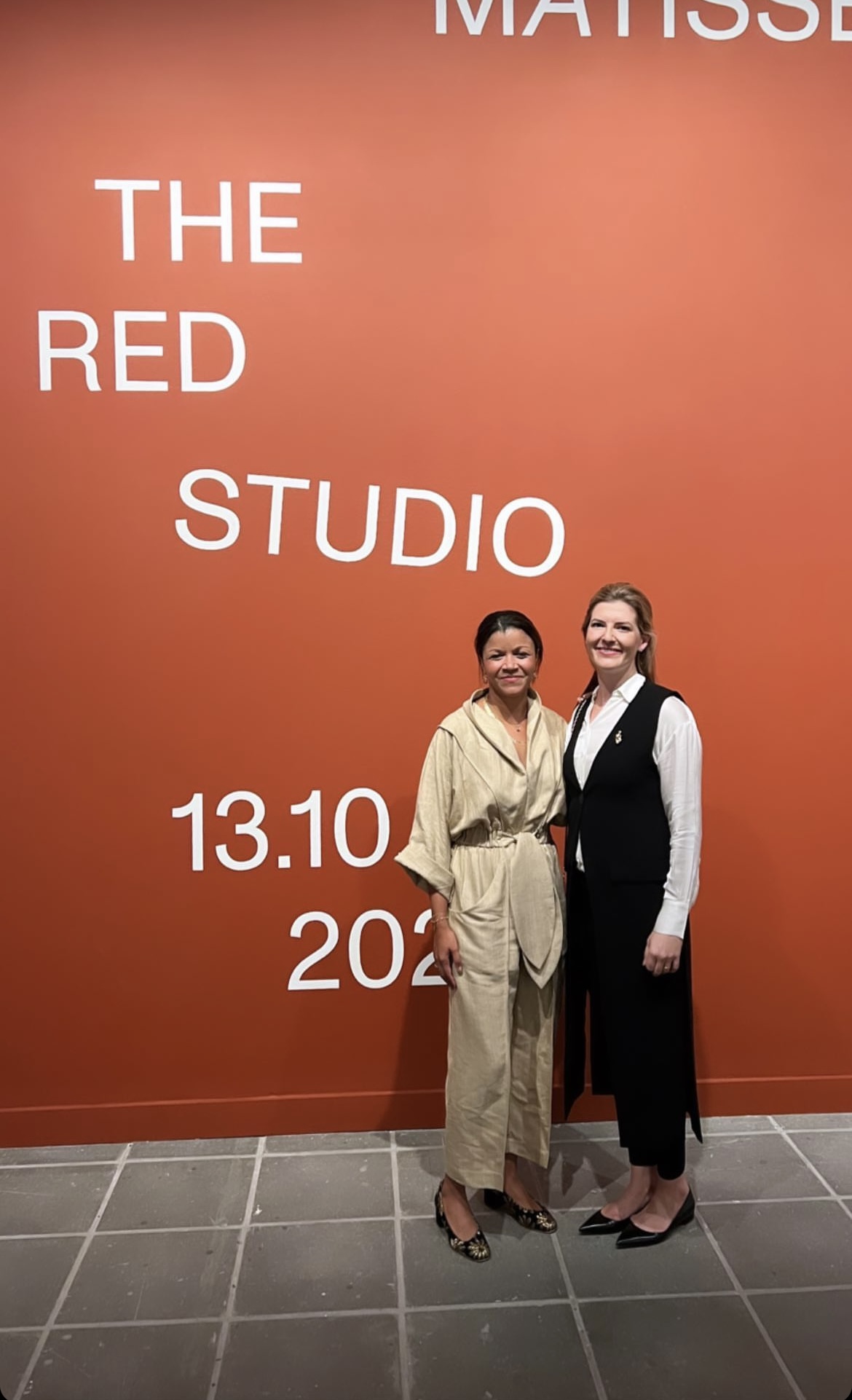




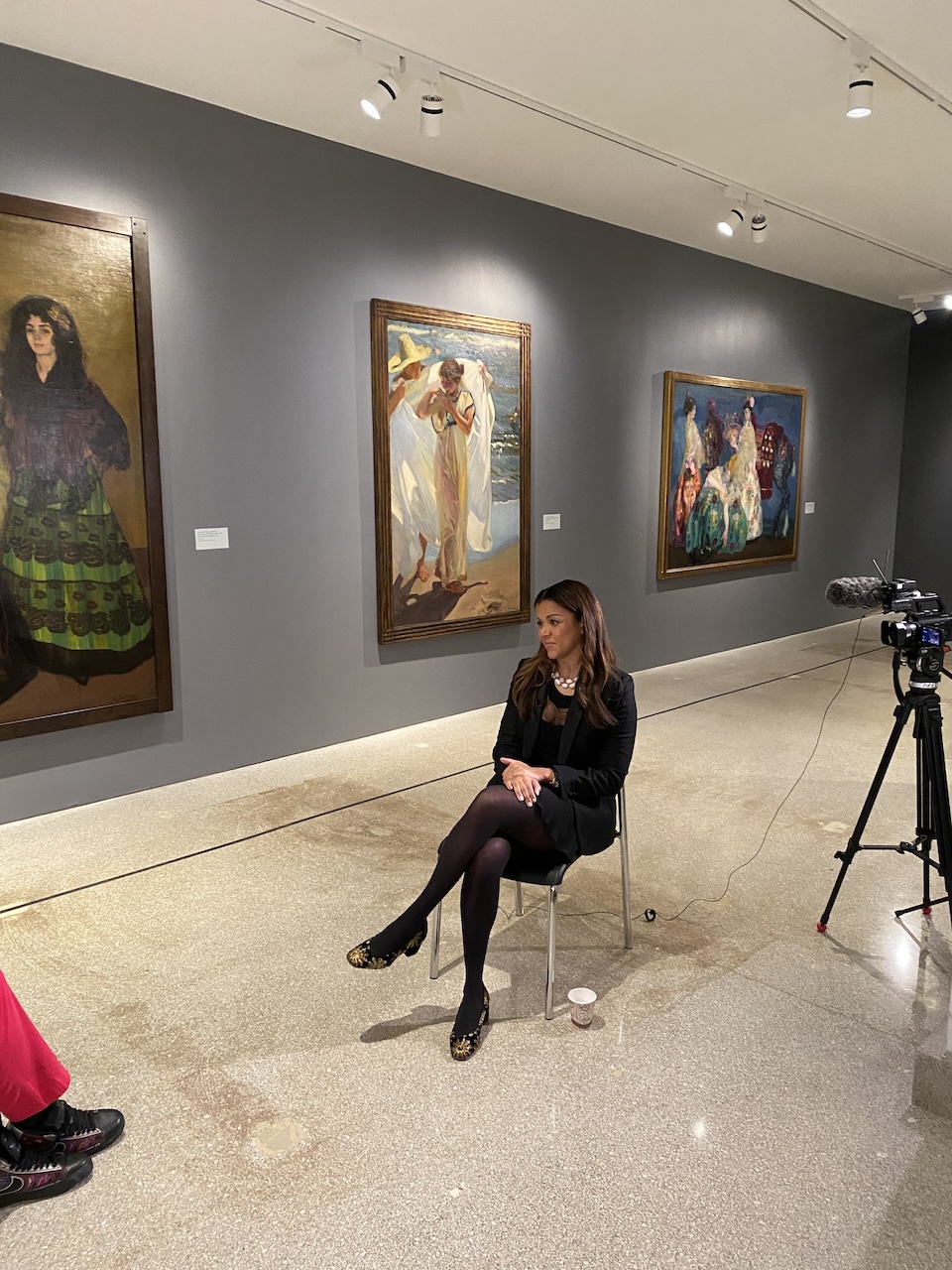
TW: As a founding member of the Steering Committee for The National Gallery’s Young Ambassadors, how do you plan to engage younger audiences at V&A East?
MH:
Focusing now on cultivating the next generations of museum visitors, professionals and patrons is the only way that we will survive as an industry and be able to preserve cultural heritage of the past, present and future.
I believe there are multiple approaches to this. First, by ensuring that younger audiences have transformative connections with the objects and stories within our collection. Second, by ensuring that young people feel a sense of agency within our spaces. At V&A East, I want our visitors to feel that the museum is a living and responsive place where their voices are heard and their opinions matter. Third, by ensuring that the narratives explored in our exhibitions and programmes reflect and relate to the daily lives of younger audiences whether through learning about history and culture that shapes their understanding of themselves or providing tools they can bring to their own creative practice and passions.
Our ambition is for V&A East to inspire and be a creative sourcebook for the next generation of artists, designers, makers, and thinkers. This ethos is embedded not only in our programming but in the design of our buildings and the foundations of our curatorial approach.
MH:
It’s been a wonderful experience becoming involved with the Public Arts Trust of India. I had the opportunity to serve on the jury for Jaipur Art Week in 2024 and spent three weeks in India, traveling through Mumbai, Jaipur, Jodhpur, and Delhi, and attending the India Art Fair.
At Photoink’s booth at India Art Fair, I was especially struck by the work of Ketaki Sheth and her photographs of people of African descent who have lived across India since the seventeenth century. Today, around 70,000 Sidi live in India, primarily in Gujarat and Karnataka. Sheth’s practice aligns closely with my own scholarship on how identity and culture have been represented and shaped by painting and photography from the nineteenth century to the present, and how these visual languages inform our understanding of contemporary life.
Once V&A East opens, there are a number of articles and book projects on my list, and I’m looking forward to delving more deeply into Sheth’s work and to exploring the broader contexts her practice brings into view.
TW: If you could have dinner with 5 artists from the V&A’s collection, who would it be and why?
MH:
This is such a wonderful and difficult question. I wish I could host multiple dinner parties. My scholarship focuses on transhistorical and cross-cultural dialogues so it would be a dream come true to see this in action across a dinner table.
I would balance my dinner between artists both living and no longer with us. For those artists who have passed, I would invite Sofonisba Anguissola, William Morris, Julia Margaret Cameron, Wilfredo Lam, and Maud Sulter. These artists, despite being under-appreciated and under-recognised in their own time, defied societal conventions, expanded the boundaries of their mediums, and paved the way for future generations. I would cherish the opportunity not only to learn more truthfully about their personal challenges and inspirations, but also to ask about how they perceive our contemporary debates about identity, empire, representation, and institutions.
For the contemporary artists, I would invite Carrie Mae Weems, Theaster Gates, Yinka Shonibare, Hew Locke, Paul Sepuya, and Magdalene Odundo. These artists engage urgent questions around belonging, material culture, memory, and the decolonisation of artistic narratives. They exemplify the vitality and complexity of global contemporary art. A conversation with them would offer invaluable insights into the evolving role of museums and the transformative power of creative practice.
TW: V&A East aims to be more than just a museum – it’s envisioned as a cultural hub. What is your favourite Culturally Curious spot in East London?
MH:
V&A East is part of a new cultural hub, East Bank, which includes new sites from Sadler’s Wells, UCL, London College of Fashion, and the BBC. When you visit V&A East Storehouse, I recommend visiting our East Bank partners, as well. London College of Fashion regularly hosts student exhibitions that platform the next generation of talent. While I highly recommend catching a performance at Sadler’s Wells East, if you can’t then they still have a fantastic café that’s well worth a visit. As we move into spring, the Queen Elizabeth Olympic Park has been coming alive with activity and events, offering a vibrant backdrop to the cultural experiences within.
East London is the youngest, fastest growing, and most diverse area of London, and has been the beating heart of the UK’s creative industries for well over a century. Art and culture is everywhere you look and is embedded in East London’s DNA. Apart from East Bank, some of my favourite places to visit include the Museum of the Home, Chisenhale Gallery, Autograph, and the Migration Museum (currently between spaces, but soon to reopen).
TW: Which book do you pass on to loved ones?
MH: I recommend anything by Bernardine Evaristo – she is a genius and I love all her work. I first fell in love with her writing through Girl, Woman, Other. Most recently, I read Mr. Loverman, one of the few stories that explores queer sexuality within the Windrush generation, set in Hackney. I’ve been recommending it to everyone I know, alongside the BBC series adaptation – you really should both read and watch it. Right now, I’m reading Blonde Roots, an alternative history of the transatlantic slave trade that challenges the narratives told by those in power and underscores their enduring impact on our world. This is why I believe so deeply in the study of art history.
TW: Who is your ultimate Monday Muse?
MH:
My ultimate Monday Muses are Thelma Golden, Director of Studio Museum in Harlem, and Elizabeth Easton, Director of the Center for Curatorial Leadership – two extraordinary women whose wisdom has shaped the arc of my career. When faced with a challenging decision, I often ask myself: What would they do? Their guidance has shaped my understanding of what it means to lead – from the earliest stages of my journey to where I am today.
I believe deeply in the power of mentorship, especially within our field, where cultivating the next generation of leaders is essential to our survival and relevance. One of the most impactful lessons I’ve learned from both of them is that true leadership means preparing others to step into your role one day, and doing so with generosity and purpose.
In 2021, I had the great privilege of working with Thelma and Elizabeth to found the CCL/Studio Museum Curators’ Forum, which has since evolved into the Studio Museum’s Art Leadership Praxis. It stands as a testament to their commitment to ensuring the future of diverse voices in the arts – and to the enduring impact of their visionary mentorship.




